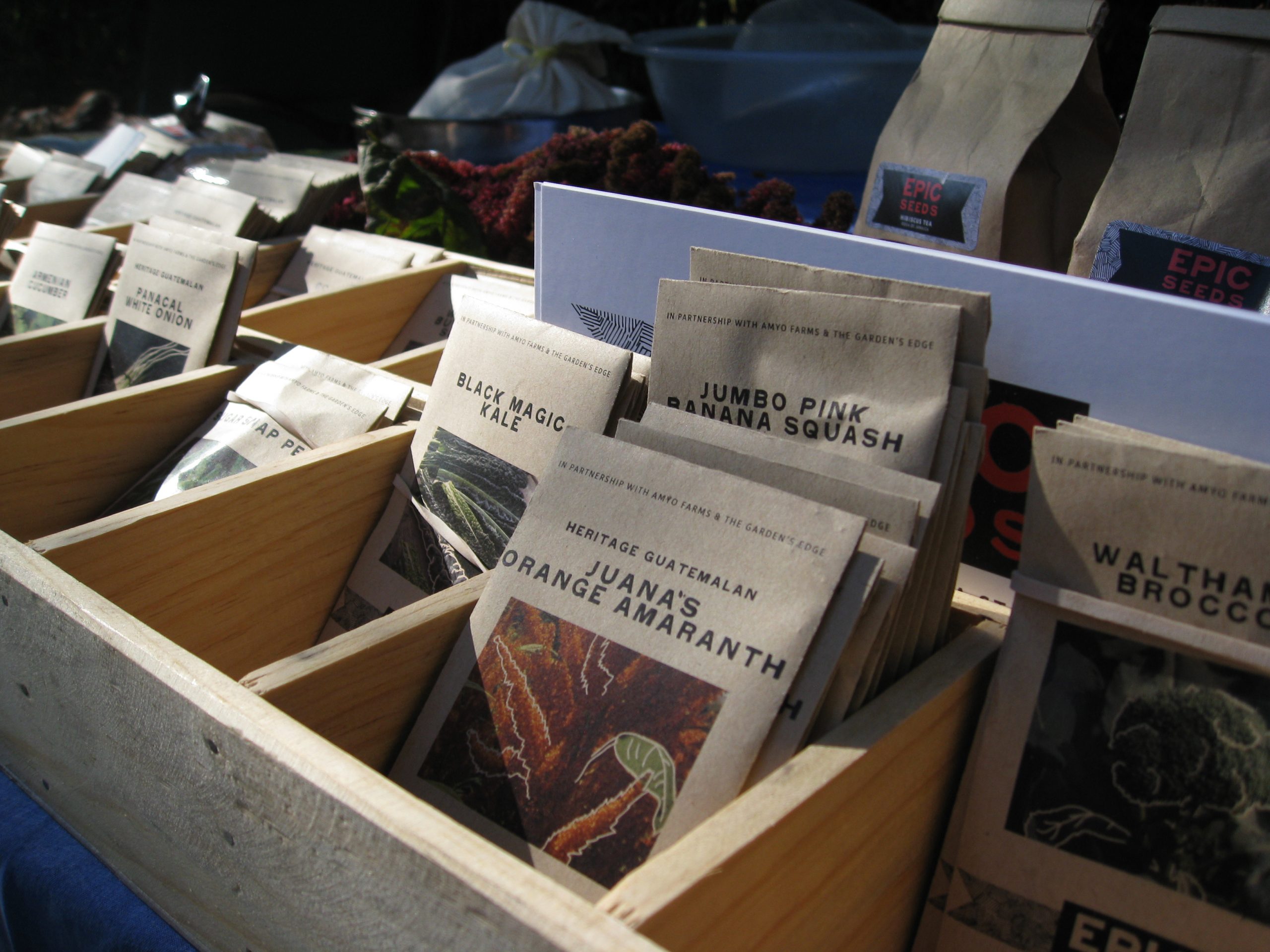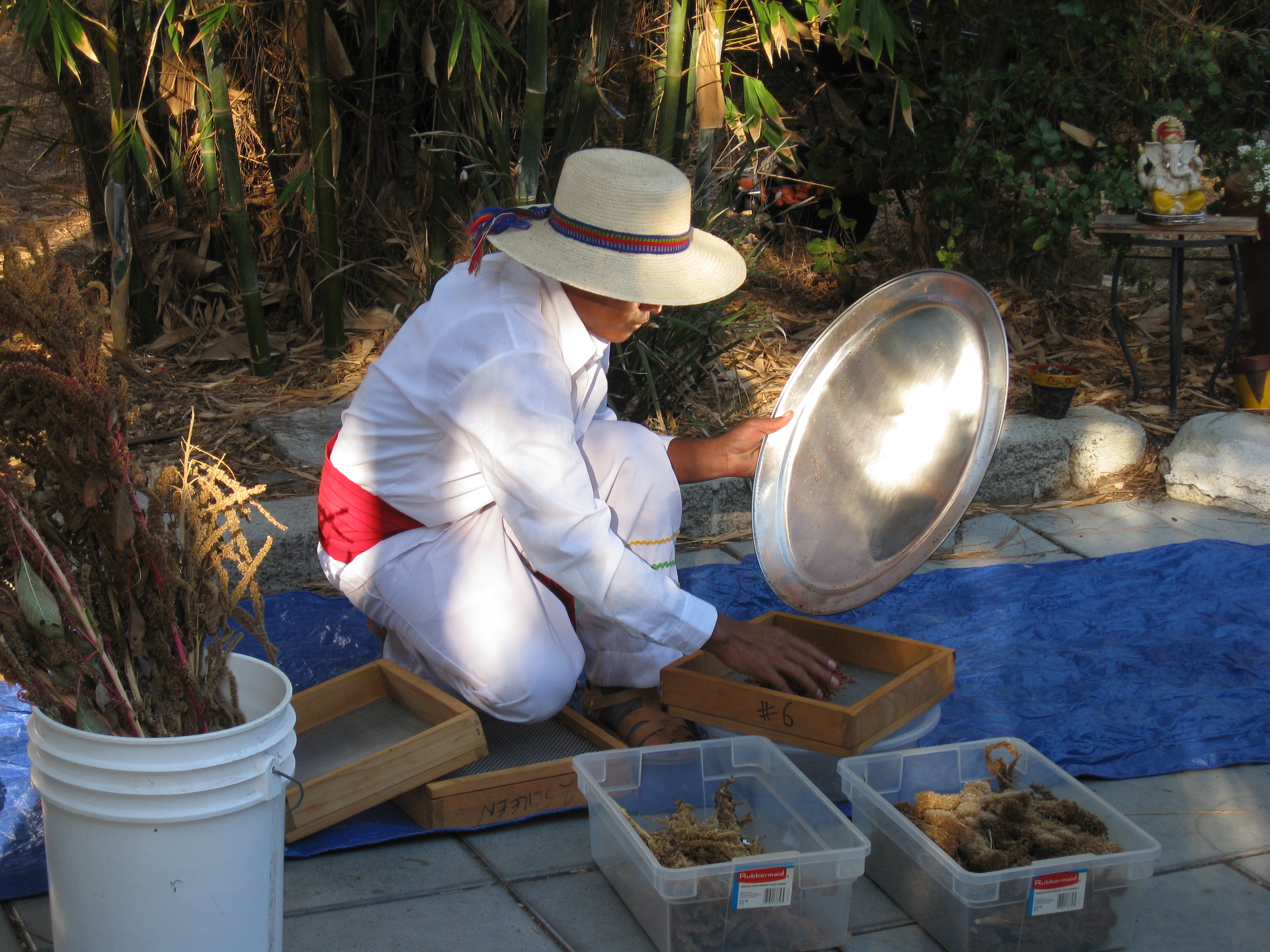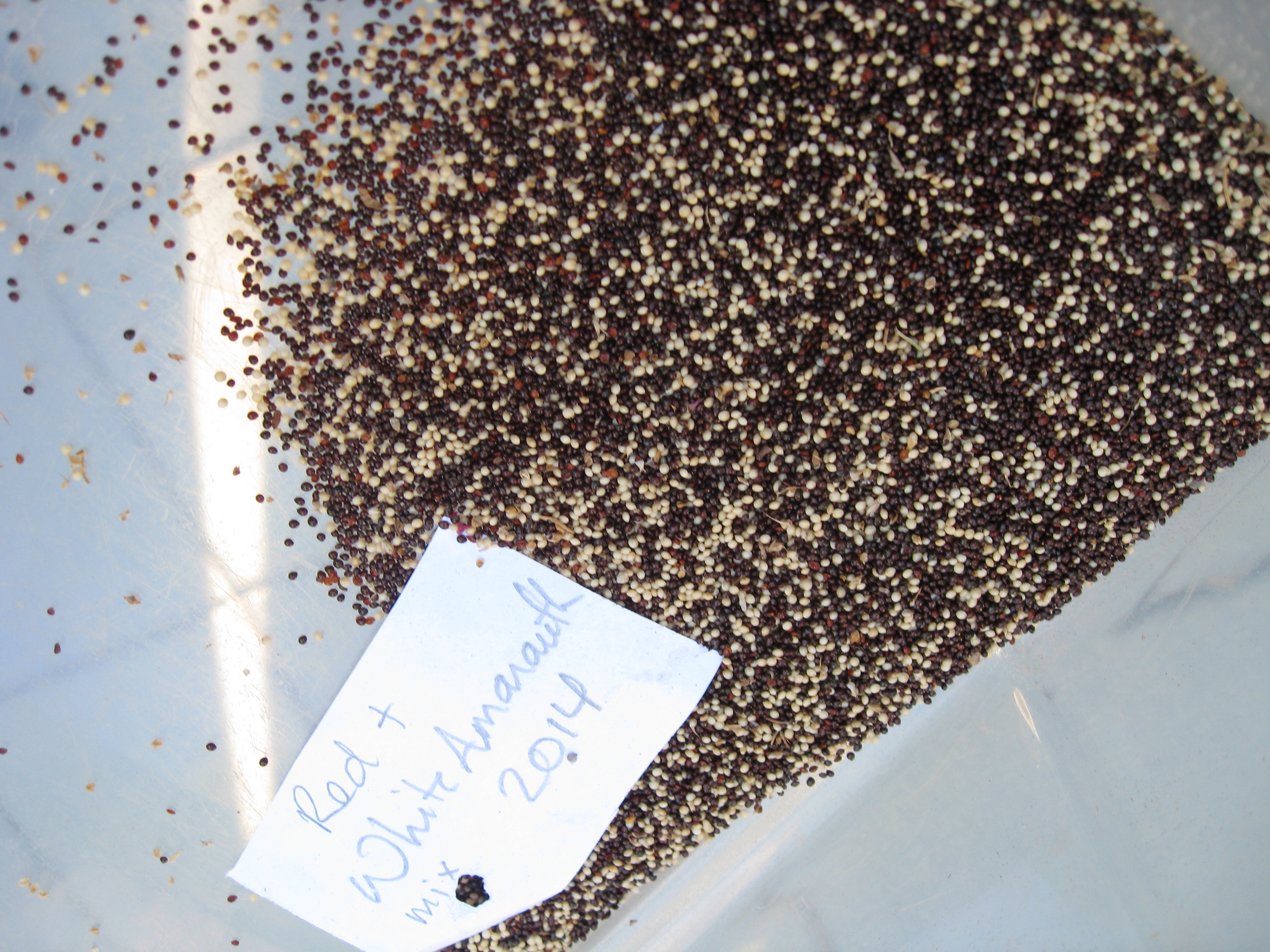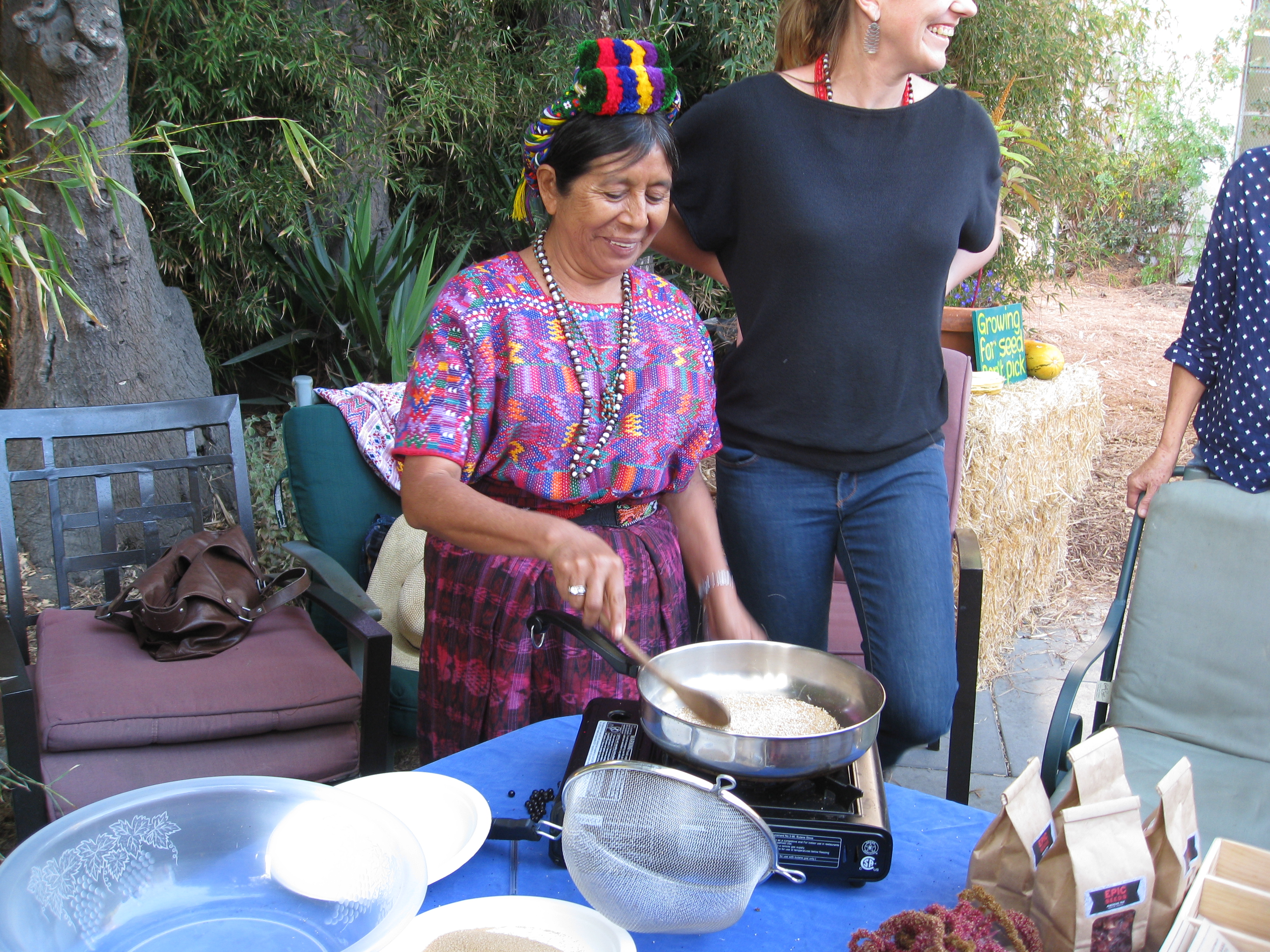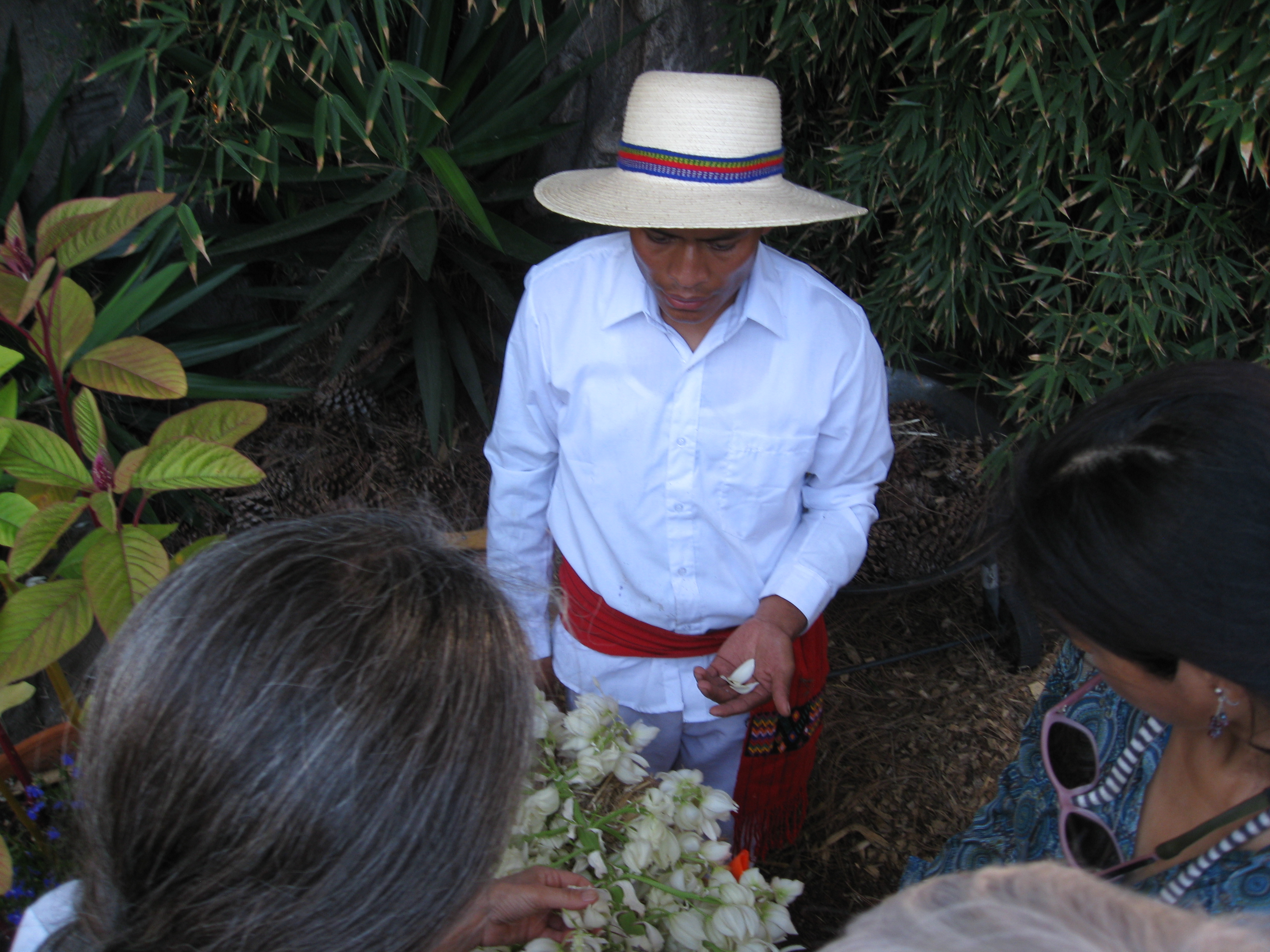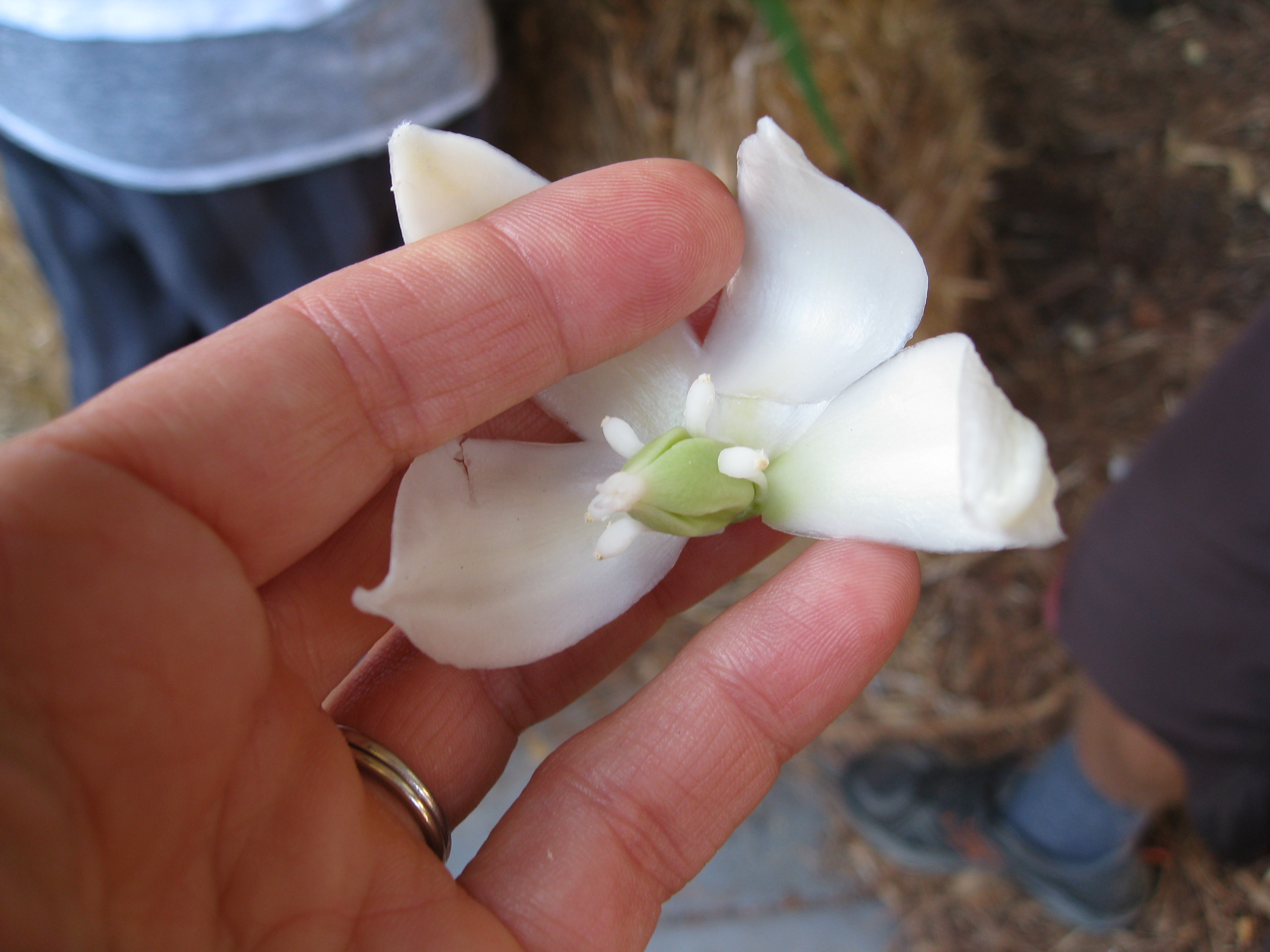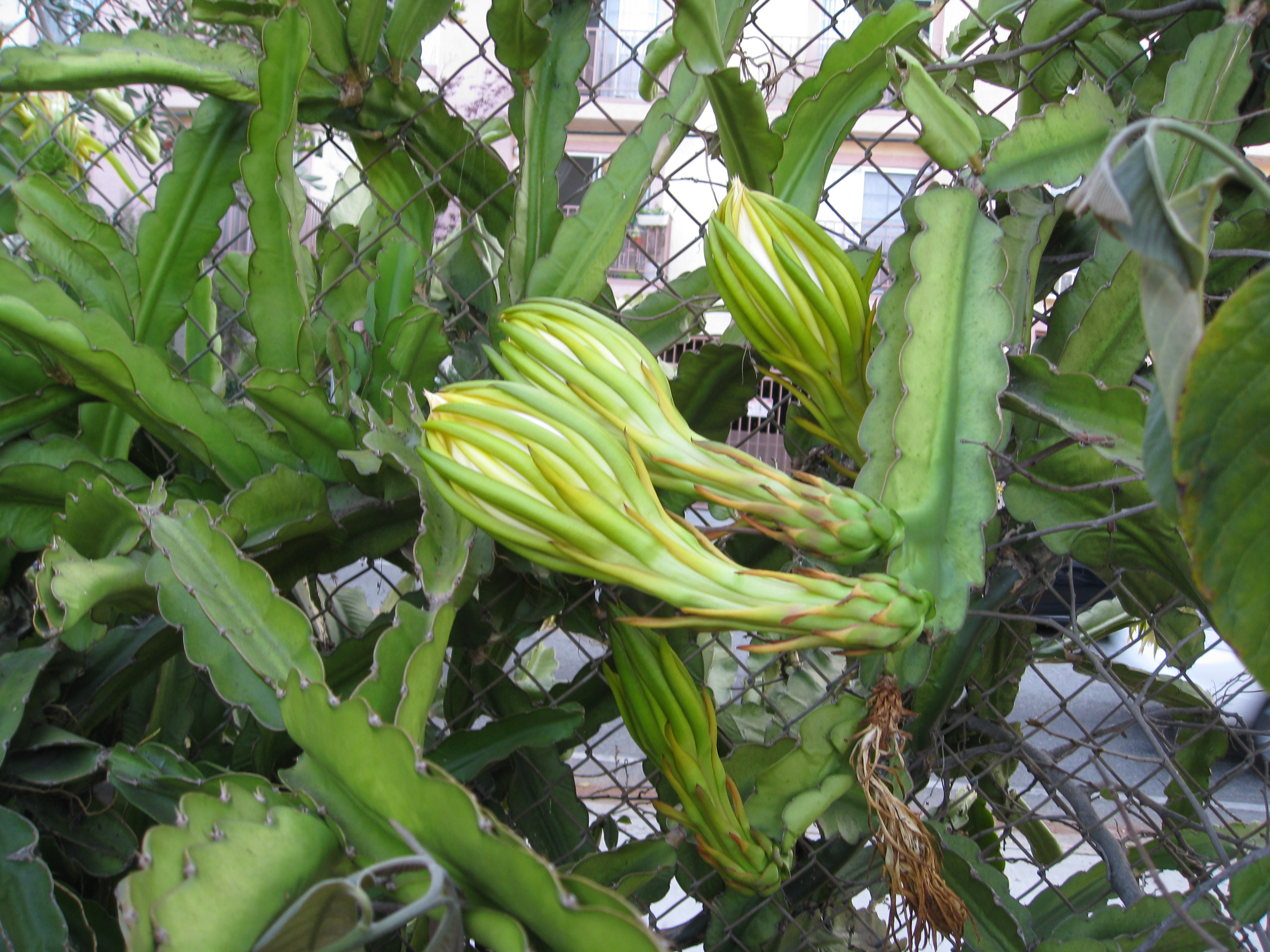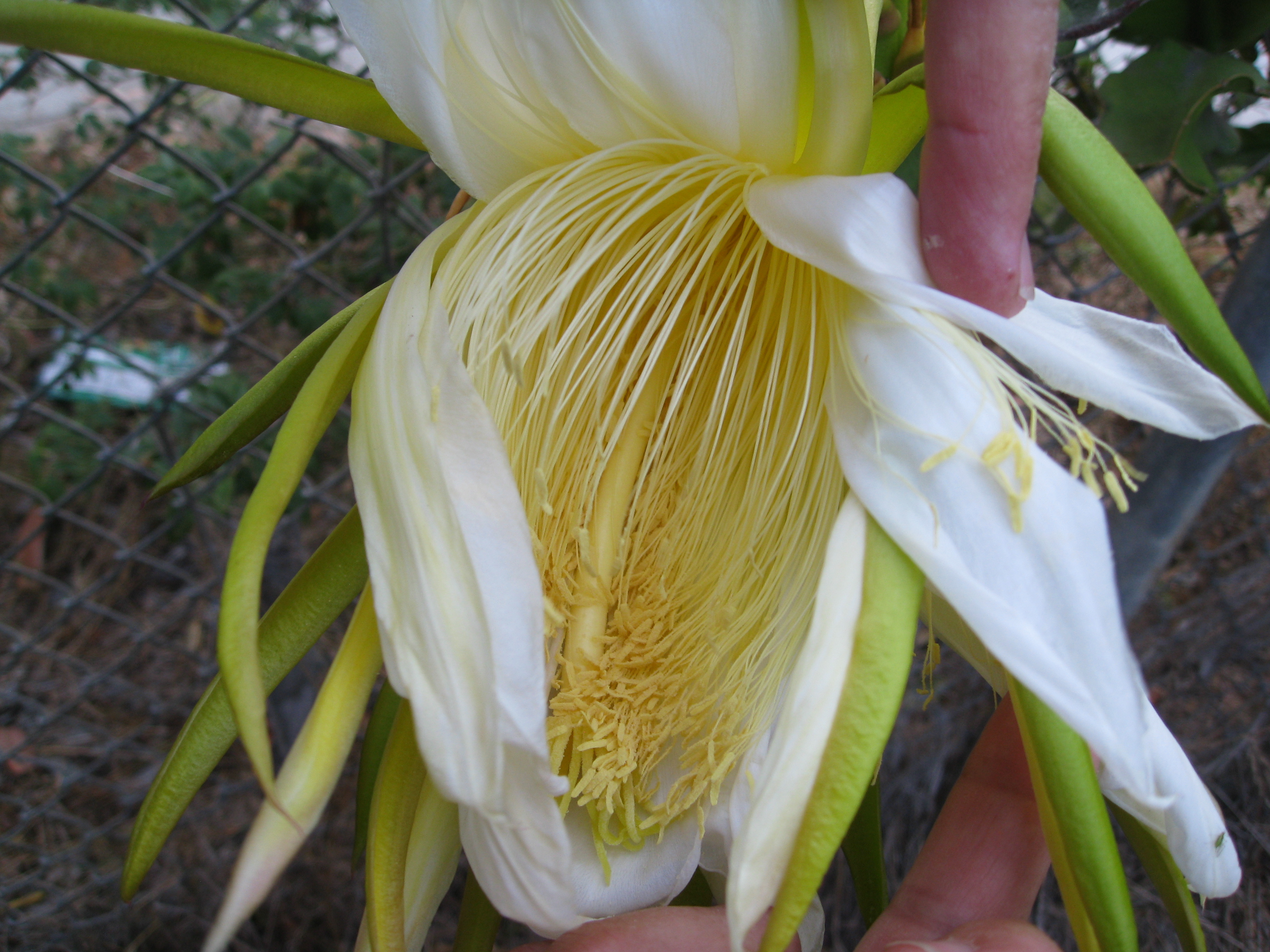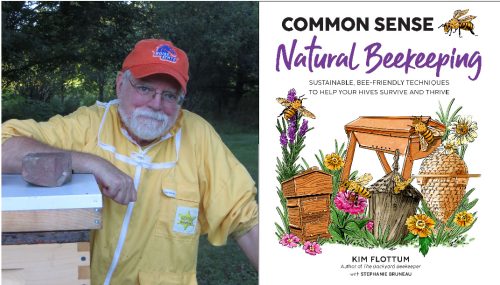The Seed Library of Los Angeles recently hosted a dinner with visiting Qachuu Aloom Farmers as they journey up to the Heirloom Expo this coming week. David King at the Learning Garden (home of SLOLA meetings) invited me to attend, and learn about how these native Guatemalan farmers harvest and save seeds for amaranth and other crops.
We got more than we bargained for during this dinner event. Not only did we eat well, but we learned tricks for how to thresh and winnow tiny grains like amaranth in almost no time.
Amaranth plants decorated each table where we gathered ’round to watch our visiting Guatemalan guests share their wisdom. First up, threshing amaranth.
We learned right off the bat that it is better to harvest (and thresh) amaranth while it is still a bit green, when the seeds start to fall from the plant. If you wait until the plant is completely dry, not only do the birds get the grain (or it shatters and falls to the ground) but it’s really hard on your hands to harvest dry seed heads. Threshing dry seeds heads is best done with the feet.
We were stunned to watch the Guatemalan farmer work without gloves. Then he revealed the trick about harvesting early. With one quick pass through a screen and only two turns at winnowing, he had clean seed. Our mouths were hanging open. “That would have taken me an hour!” someone exclaimed.
Next, the Guatemalan ladies in native dress took the cleaned amaranth and brought it over to a hot gas burner to demonstrate something I had never considered before: popped amaranth.
Amaranth grains jumped out of the pan in a frenzy, and we all asked if it makes sense to use a taller pan (like a stock pot). Through a translator from Garden’s Edge seeds (partners of the Qachuu Aloom farmers), the woman agreed with a smile.
She and her colleague poured the popped amaranth on a plate and passed it around for us to sample. It had the fragrance of pop corn, in a tiny portion. It was delicious.
While the translator was talking, suddenly a branch of a flowering yucca behind her broke off and fell to the ground. The Qachuu Aloom farmer in his native garb immediately grabbed the branch and cut the flower head from the plant. He handed out flowers to the guests to sample as he popped one in his mouth.
The petals tasted sweet and floral, and surprisingly a lot like lettuce. I didn’t try to other parts of the flower. Next, David King took us on a tour of the Learning Garden where we say their crop of Dragon Fruit in flower.
A couple of us were so distracted by it’s beauty, we wandered off from the tour for a photograph.
By the time we returned to the meeting area, food had appeared. On the menu, garden-grown gazpacho and other treats made with native and local ingredients.
We learned a lot in a short time, and I picked up some Lacinato kale seeds that have been successfully grown in the dessert. In our drought, I figure this is the key solution to our problem – local seeds adapted to our change environment. If you are headed to the Heirloom Expo, you’ll find these and more seeds for sale through Qachuu Aloom and Garden’s Edge.

